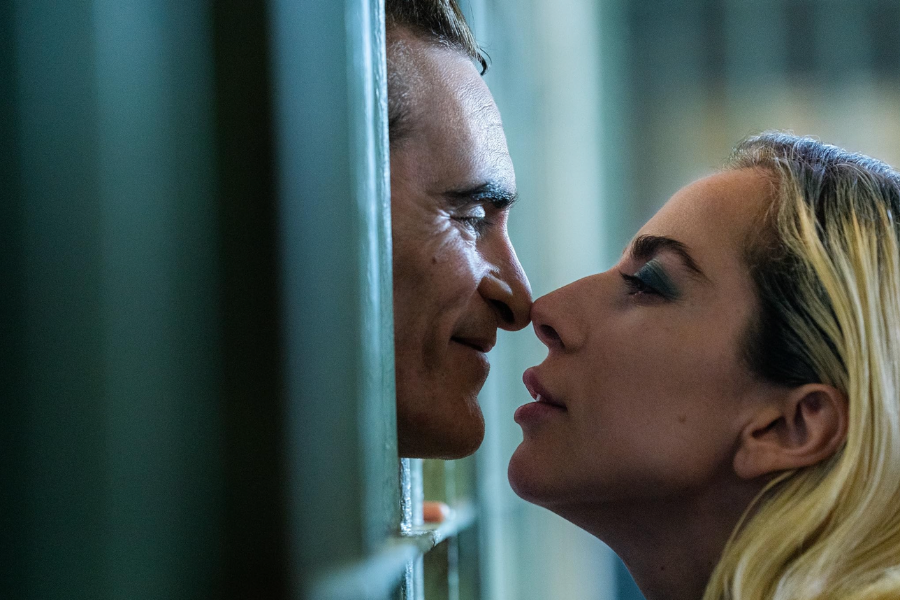In 2019, Todd Phillips’ “Joker” captured a cultural movement, becoming the first R-rated movie to gross over a billion dollars, winning multiple Academy Awards and even garnering worry about whether the fictional violence depicted in the film would translate into reality. As the torch passed to Joaquin Phoenix to take on the role of such an infamous character, polarizing opinions inevitably ensued.
For many young audiences, seeing “Joker” sparked a deeper interest in film among a market full of surface-level superhero movies, excited by its contemplative moral themes. However, the film was no stranger to criticism, likened to a far-worse recreation of famed director Martin Scorcese’s “Taxi Driver” (1976), blamed for stirring up nihilistic violence with no substance to show for it and pandering to the angry white male population.
In many ways, “Joker” brought impassioned critique back to theaters, and its recent follow-up co-starring Lady Gaga debuted as one of the most anticipated films of the year. While the original “Joker” was enticing, “Joker: Folie à Deux” is a confused and soulless cash grab, with its artistic choices dampening the success, credibility and meaning of the prior film.
Even though it’s unclear in the trailer, “Joker: Folie à Deux” is fully a musical, a complete departure from the dark, maniacal tone set in the first installment. Apart from song and dance, the film continues detailing the consequences of Arthur Fleck’s descent into his identity as the Joker. After multiple murders, he’s trapped at Arkham Asylum awaiting his fate in a life-or-death trial. While his daily routine is one of misery, catalyzed by his severe mental illness, the tone changes significantly when he catches sight of fellow inmate Lee Quinzel (Lady Gaga) at a prison choir practice.
Arthur’s life is completely upended as he develops an obsessive infatuation with Lee, which feeds into his reckless and disturbed behavior at his trial. As a result of his anarchistic violence in the previous film, Arthur turned Gotham City into a center of reckless crime, where its inhabitants idolize Joker rather than respect law and order.
The artistic choices made by director Phillips are just plain odd. For a film franchise marketed mainly to men, or “film bros” if you will, the choice to frame the new film as a musical feels like a devastating misstep. The die-hard fans of the original are no longer the prioritized audience.
Both films carry similar technical aspects, such as dark and dreary cinematography juxtaposed with Arthur’s colorful costuming, and the ever-present haunting violin theme by composer Hildur Guðnadóttir. But the original details a slow and dark descent into madness á la Travis Bickle in “Taxi Driver,” while its sequel feels more like a lackluster attempt at recreating a vintage technicolor musical.
Following the immense success of the first film, this follow-up feels like a rushed and greedy move by the studio, looking to capitalize on hype and star power rather than a sustained narrative. As for the musical numbers, none of the songs are catchy nor deliver much emotion and structure to the story. They evoke a style reminiscent of Frank Sinatra and Judy Garland, one of little meaning to today’s cultural climate. Where songs like “Shallow” from Gaga’s first feature lead role in “A Star is Born” topped the charts and resonated with viewers everywhere, these songs fall flat, leaving the audience begging to get the jazzy routine over with and onto the next scene.
“Folie à Deux,” which translates to “madness for two,” is somehow a perfect way to encapsulate the film. Arthur and Lee seem stuck in their own world of delusions, which excludes the audience and fellow cast from resonating with the characters. Phoenix — who won the Academy Award for Best Performance by an Actor in a Leading Role for his role as Arthur in 2020 — continues this immersive performance, but beyond the cackling laugh and twisted facial expressions, there’s not much else meaningful under the surface. The same goes for Gaga, who feels particularly underutilized and underdeveloped. Who is Lee Quinzel, and how does she morph into Harley Quinn? Who holds the power between the two? This seemingly exclusive world of madness culminates in a frustrating ending, relying on shock value as a hasty means of closure.
During its opening weekend, the film brought in a dismal $38 million from box office sales, after being projected to initially surpass $70 million. In comparison to the first film’s success, with $96.2 million from its opening weekend and eventual billion dollar turnout, it’s clear the distaste for “Joker: Folie à Deux” is collective, with many fans taking to social media to express their dislike for the sequel, feeling they wasted their money. Where “Joker” was a cultural phenomenon for the comic book genre, its much-anticipated follow-up proves yet again that if it ain’t broke, don’t fix it.
Contact Maggie Turner at [email protected].

























































































































































